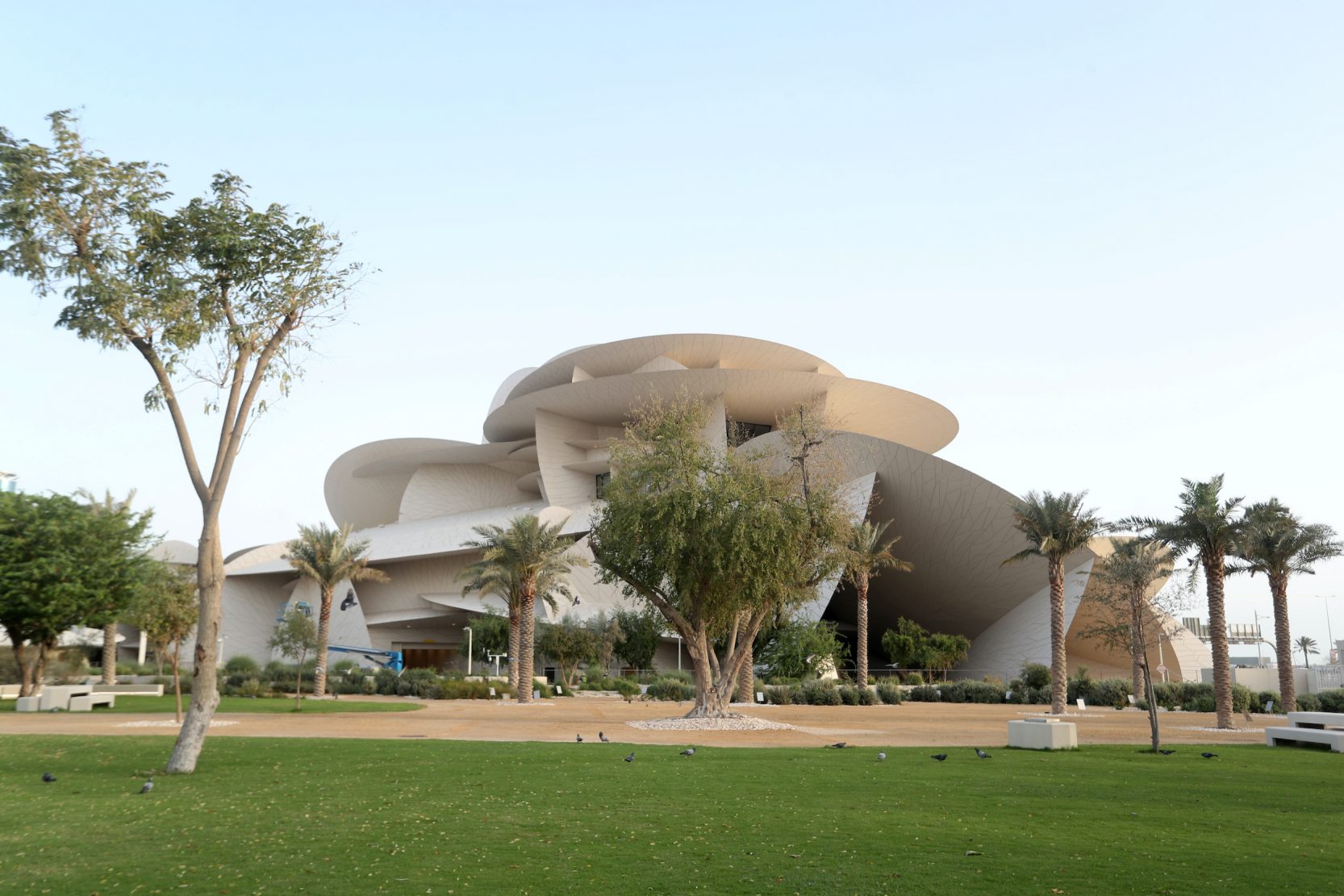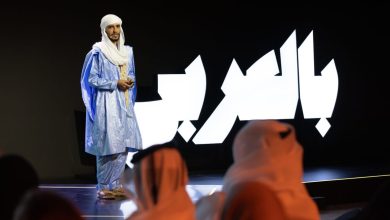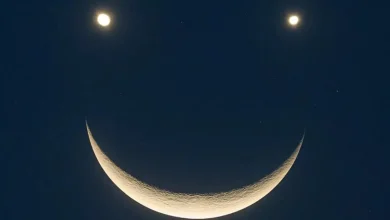Step into Qatar’s Ancient Past: Qatar Museums Opens Doors to Hidden Archaeological Treasures
اكتشف أسرار قطر القديمة: متاحف قطر تفتح أبواب الماضي لعشّاق التاريخ
WGO
Qatar Museums (QM) is inviting history enthusiasts, culture seekers, and curious minds to embark on a one-of-a-kind journey through time with a series of open days at two remarkable archaeological excavation sites—Ain Mohammed and Mesaika in northern Qatar. These exclusive experiences will take place on February 15, March 1, and March 15, offering the public a rare opportunity to witness history being unearthed before their eyes.
As part of the Landscapes of Faith research project, visitors will enjoy expert-led guided tours, engage in hands-on excavation activities, and see artifacts that have remained buried for centuries. This immersive experience allows guests to stand where early settlers once walked and uncover the untold stories of Qatar’s past.
A Glimpse into Qatar’s Past
Faisal Al Naimi, Director of the Archaeology Department at QM, emphasized the significance of these open days:
“History isn’t just something we read about in books—it’s beneath our feet, waiting to be rediscovered. These open days give people a chance to connect with Qatar’s cultural legacy, fostering a deeper appreciation for the rich heritage we inherit and the importance of preserving it for future generations.”
Dr. Robert Carter, Senior Archaeology Academic and Director of the Landscapes of Faith project, shed light on the fascinating discoveries made at these sites:
“We are uncovering evidence of a time when Qatar was a thriving hub of trade and transformation. The people who lived here weren’t isolated; they were part of a vast network that stretched from the Islamic world to as far as China. Through these excavations, we’re piecing together the story of their lives—what they made, how they traded, and how faith shaped their evolving communities.”
Unearthing Hidden Stories
Dating back to the 7th-9th centuries CE, the Landscapes of Faith project explores the transition to Islam in eastern Arabia. Over 30 archaeological sites from this pivotal era have been identified across Qatar, most concentrated in the north. The Ain Mohammed North B and Mesaika A sites were selected for excavation due to their unique architectural structures, suggesting they were centers of trade, industry, or craftsmanship rather than just homes.
Among the intriguing artifacts discovered are:
🔹 Pottery and glass fragments—traded from distant lands, revealing Qatar’s international connections.
🔹 Quern-stones—evidence of grain milling, offering a glimpse into daily life.
🔹 An iron key—a relic hinting at security and property ownership.
🔹 Copper rods (possibly used for applying kohl)—a nod to personal grooming traditions.
🔹 Three spindle whorls—delicate tools used in textile production, with fine engravings that suggest the creation of intricate fabrics.
The open days offer more than just a tour—they are an invitation to touch history, to stand where ancient communities thrived, and to witness Qatar’s evolution through the artifacts left behind.
WGO
تدعو متاحف قطر عشّاق التاريخ والباحثين عن التجارب الثقافية إلى رحلة عبر الزمن، من خلال سلسلة أيام مفتوحة في اثنين من أبرز المواقع الأثرية في شمال قطر، عين محمد ومسيكة. ستُقام هذه التجربة الفريدة في 15 فبراير، 1 مارس، و15 مارس، لتمنح الزوار فرصة نادرة لاكتشاف ماضٍ ظلّ مدفونًا لقرون، والاقتراب من أسرار الحضارات التي سكنت هذه الأرض.
كجزء من مشروع الأبحاث مشاهد الإيمان، سيتمكّن الزوار من خوض تجربة تنقيب حيّة، والانضمام إلى جولات إرشادية يقودها خبراء الآثار، والتفاعل مباشرة مع مكتشفات نادرة تكشف تفاصيل الحياة اليومية للسكان الأوائل في قطر.
نافذة على الماضي القطري
أوضح فيصل النعيمي، مدير إدارة الآثار في متاحف قطر، أهمية هذه الفعالية قائلاً:
“التاريخ ليس مجرد كلمات في الكتب، بل هو بين أيدينا، وتحت أقدامنا، بانتظار أن نعيد اكتشافه. الأيام المفتوحة تمنح الجمهور فرصة حقيقية للاتصال بتراث قطر العريق، وتعزز أهمية الوعي بالحفاظ على هذه الكنوز الأثرية للأجيال القادمة.”
بدوره، أشار د. روبرت كارتر، الأكاديمي البارز ومدير مشروع >مشاهد الإيمان، إلى الاكتشافات المذهلة التي كشفتها الحفريات قائلاً:
“ما وجدناه في هذه المواقع يروي قصة قطر كمركز تجاري وحضاري مهم. لم يكن سكان هذه المناطق معزولين، بل كانوا جزءًا من شبكة تجارية ضخمة تمتد من العالم الإسلامي حتى الصين. من خلال هذه التنقيبات، نحاول إعادة بناء صورة حياتهم، وأسرار تجارتهم، وكيف ساهمت معتقداتهم في تشكيل هويتهم الثقافية.”
يركّز مشروع مشاهد الإيمان على دراسة المواقع التي تعود إلى القرنين الأول والثالث الهجري (7-9 الميلادي)، وهي الحقبة التي شهدت التحوّل إلى الإسلام في شرق الجزيرة العربية. وقد تم تحديد أكثر من 30 موقعًا أثريًا تعود لهذه الفترة، معظمها في شمال قطر. وتم اختيار موقعي عين محمد شمال ب ومسيكة أ بسبب تصميمهما الفريد الذي يوحي بأنهما لم يكونا مجرد منازل، بل كانا أشبه بورش صناعية أو مراكز حرفية وتجارية.
ومن بين المكتشفات البارزة التي عُثر عليها:
🔹 شظايا فخار وزجاج مستوردة—تكشف عن الروابط التجارية مع الحضارات البعيدة.
🔹 أحجار طحن الحبوب—تمنح لمحة عن الحياة اليومية للسكّان.
🔹 مفتاح حديدي—قد يكون جزءًا من باب منزل أو مخزن.
🔹 قضبان نحاسية (قد تكون أداة لتطبيق الكحل)—تذكير بتقاليد العناية الشخصية القديمة.
🔹ثلاث دوامات مغزلية—تدل على صناعة النسيج، حيث كانت بعضها محفورة بنقوش دقيقة تُشير إلى استخدام خيوط ناعمة لإنتاج أقمشة فاخرة.
هذه الأيام المفتوحة ليست مجرد فرصة لزيارة موقع أثري، بل هي دعوة لخوض تجربة حية، تُمكّن الزوار من لمس الماضي، والتفاعل مع أسرار الحضارات القديمة، ومشاهدة التاريخ ينبض بالحياة أمام أعينهم.




